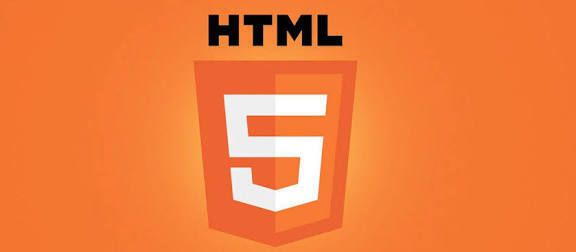When I first started building websites, my HTML looked like this:
<div id="header"></div>
<div id="content"></div>
<div id="footer"></div>
It worked… but it wasn’t meaningful.
Then I discovered HTML5 semantic elements, and everything changed.
My code became cleaner, easier to maintain, and better understood by search engines — which improved my site’s SEO and accessibility.
If you’re serious about writing professional HTML (or want to finally understand how to structure your pages properly), this article is for you.
Let’s go through the most important semantic elements and why you should use them — all explained simply, just like I teach in my book Learn HTML in 7 Days
.
What Are Semantic Elements?#
Semantic elements are HTML tags that describe their meaning both to the browser and to developers.
For example:
<header> clearly represents a header section.
<article> means an independent piece of content.
<footer> means the bottom section of a page or post.
Unlike <div> or <span>, semantic tags make your code self-explanatory — no need for dozens of class names.
That’s one of the first lessons I emphasize in Learn HTML in 7 Days — writing HTML that tells a story on its own.
Why Semantic HTML Matters
Here’s why these elements are so powerful:
Improves readability: both for humans and browsers.
Enhances accessibility: screen readers can identify sections easily.
Boosts SEO: Google understands your page structure better.
Easier maintenance: cleaner, more meaningful code.
These benefits are exactly what separate “just code” from real web development.
It’s the foundation I built my tutorials and resources on at LearnWithJossy.com
.
The Most Important HTML5 Semantic Elements
Let’s break down the ones you’ll use most often 👇
1. <header>
Defines the top section of a page or article.
Usually contains navigation, logos, or headlines.
<header>
<h1>Learn With Jossy</h1>
<nav>
<a href="#home">Home</a>
<a href="#courses">Courses</a>
</nav>
</header>
Use it for every major section — not just at the very top of your site.
2. <nav>
Contains links to other sections of your site.
<nav>
<a href="#articles">Articles</a>
<a href="#contact">Contact</a>
</nav>
It helps search engines understand your site’s structure — a simple SEO win I talk about in my HTML guide.
3. <main>
Represents the main content of your page.
You should only have one per page.
<main>
<h2>Master HTML in Just 7 Days</h2>
<p>Learn the building blocks of the web at LearnWithJossy.com</p>
</main>
4. <section>
Groups related content under a theme or topic.
<section>
<h2>HTML Tutorials</h2>
<p>Step-by-step lessons on LearnWithJossy.com</p>
</section>
It’s perfect for dividing your page into logical, meaningful parts.
5. <article>
Used for independent content — like blog posts, product pages, or tutorials.
<article>
<h2>HTML Basics You Need to Know</h2>
<p>This article covers the core of HTML...</p>
</article>
If you write on dev.to or have your own blog (which I recommend doing on LearnWithJossy.com 😉), wrap each post in an tag.
6. <aside>
Contains extra information related to your main content — like a sidebar, tips, or call-to-actions.
<aside>
<h3>Learn Faster</h3>
<p>Download <a href="https://learnwithjossy.com">Learn HTML in 7 Days</a> to master HTML step-by-step.</p>
</aside>
It’s a clean, non-intrusive way to promote resources or related content — just like this one!
7. <footer>
Defines the bottom section of a page or an article.
<footer>
<p>© 2025 Learn With Jossy. All rights reserved.</p>
</footer>
Every page and post should have one. It’s great for credits, copyright, or social links.
8. <figure> and <figcaption>
Used for images, charts, or diagrams with captions.
<figure>
<img src="html-structure.png" alt="HTML page structure">
<figcaption>Basic HTML structure from LearnWithJossy.com</figcaption>
</figure>
This combo makes your visuals more accessible and SEO-friendly.
9. <time>
Represents a specific time or date — often used in articles or blog posts.
<time datetime="2025-10-18">October 18, 2025</time>
Google can read this for rich results (like “Published on…” snippets).
10. <mark>
Highlights important text, great for emphasizing key points.
<p>Always use <mark>semantic elements</mark> to improve your SEO.</p>
⚡ A Quick Example: Before vs After
Old non-semantic structure:
<div id="header"></div>
<div id="content"></div>
<div id="footer"></div>
Modern semantic structure:
<header></header>
<main></main>
<footer></footer>
Cleaner, smarter, and more meaningful exactly the kind of HTML I teach step-by-step in Learn HTML in 7 Days on LearnWithJossy.com.
Final Thoughts
Semantic HTML isn’t just about code — it’s about communication.
You’re telling browsers, search engines, and even other developers what your content means, not just how it looks.
When you start writing semantic, structured HTML, your pages perform better, load faster, and rank higher.
If you want to master HTML from the ground up — including how to use these elements effectively, check out my ebook 👉 Learn HTML in 7 Days
.
It’s a hands-on, beginner-friendly guide that teaches you not just what to code, but why it matters.
And don’t forget to explore more free lessons and web dev tips at LearnWithJossy.com
Your hub for mastering web development step by step.




Top comments (0)
Some comments may only be visible to logged-in visitors. Sign in to view all comments.